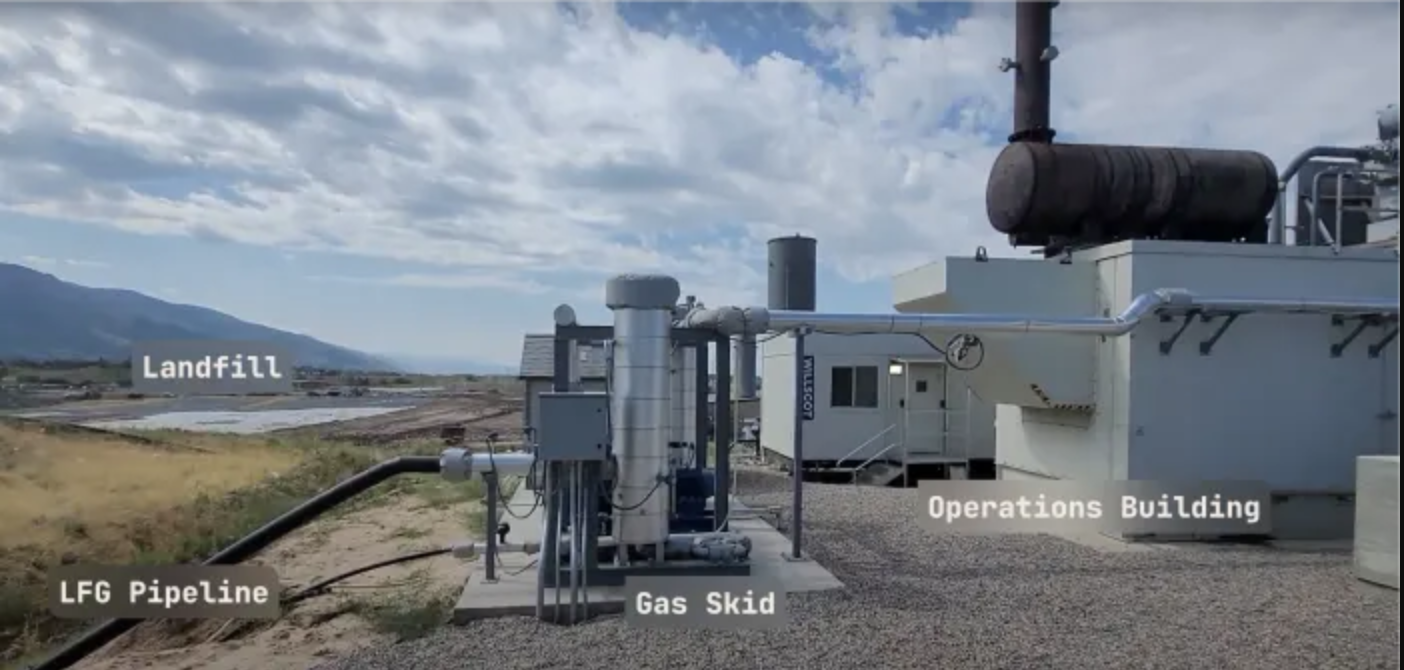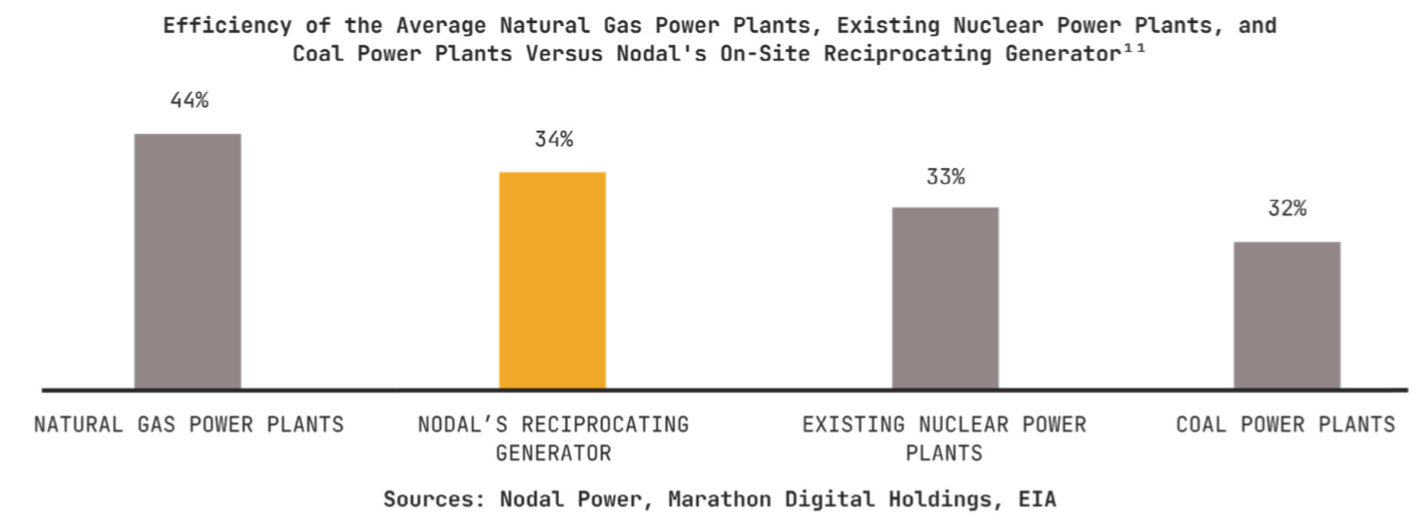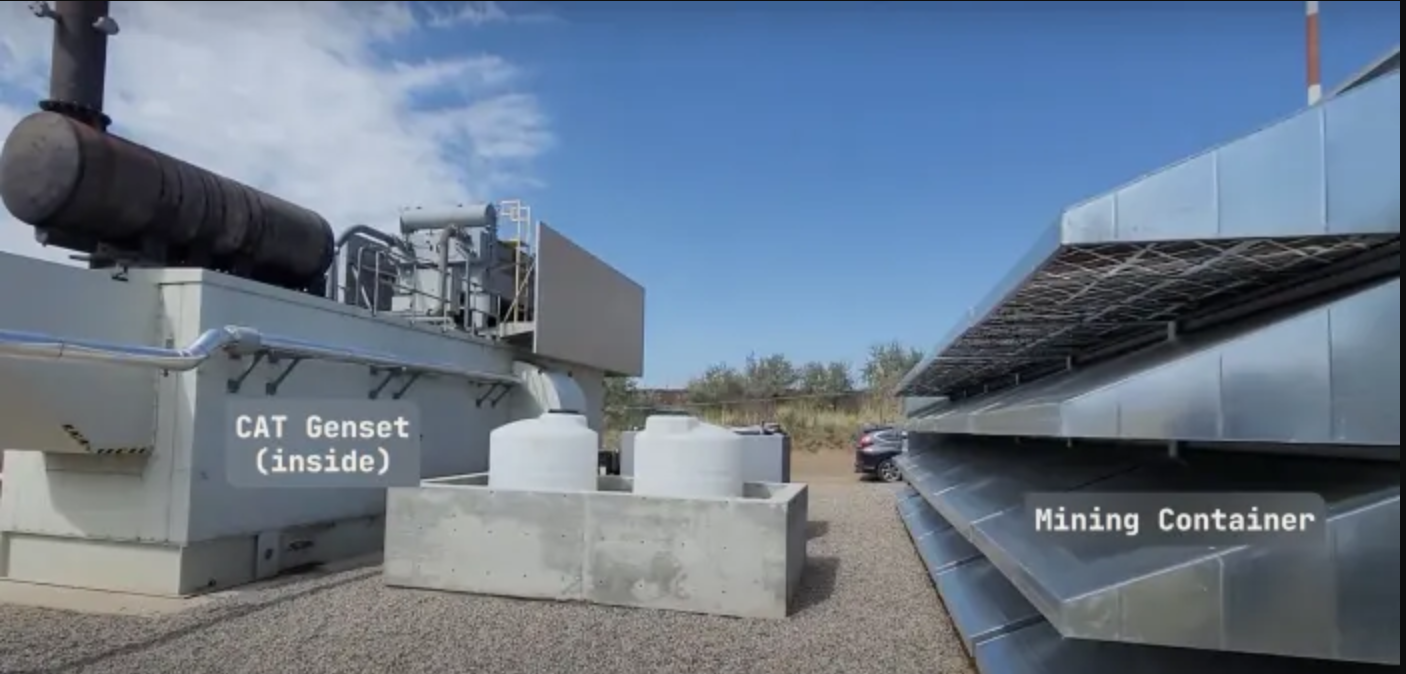Nodal Power and Marathon Digital provide figures on Bitcoin mining in landfills
The concept of integrating bitcoin mining facilities into landfills to reduce methane emissions and increase landfill profitability has often featured in the news in recent months. However, it has been limited to the theoretical underpinnings, financing models and initial trials, such as those from companies Nodal Power, Vespene Energy and DC Two.
As reported by Blocktrainer.de, the companies Nodal Power and Marathon Digital have jointly launched a pilot project to provide practical figures on the concept. They have now published these figures in a corresponding study and as an initial proof of concept.
Background to the study
In order to combat climate change and achieve climate targets, it makes sense to reduce methane emissions in particular, which are significantly more harmful to the environment than carbon dioxide emissions. Landfills are responsible for a large proportion of global methane emissions, and the trend is rising. Large facilities can reduce methane emissions using specialized technology to convert the methane into either electricity or renewable natural gas (RNG), monetize it and distribute it through the appropriate infrastructure. However, such methods are neither practical nor economical for smaller or remote landfills.
With their pilot project, Nodal Power and Marathon Digital aim to prove that the direct use of converted electricity by Bitcoin mining data centers at such sites is a possible solution to reduce methane emissions and increase the profitability of landfills.
Details of the pilot project
The two companies jointly operate a 280-kilowatt bitcoin mining facility in Utah, USA, which is powered exclusively by electricity generated from landfill gas. The study started on September 27, 2023 and initially covers a period of 240 days, i.e. until May 24, 2024. 83 S19J Pro mining devices (from Bitmain) ensure a hash rate of 8.3 petahashes per second (PH/s) in the Bitcoin mining facility.

When converting the landfill gas, the methane gas is first collected and fed into a gas compression and treatment plant, where the gas is treated and pressurized to the required standards. The quantity and composition of the organic matter in the landfill influences the gas quality and therefore the treatment process. In the case of the Utah plant, "the landfill gas contained about 50 percent methane, which required comparatively little treatment. A reciprocating generator converts the treated gas into electricity, which then directly powers the Bitcoin mining data centers.

Results
The study offers various calculation models and provides the results of the first 240 days of the project. These include methane utilization and containment, global warming potential avoided (for the 20 and 100 year periods), the efficiency and uptime of the plant, and the financial benefits for all stakeholders.
For better understanding, this article converts some quantities from the imperial to the metric system, i.e. 1 cubic foot (SCF) = 0.0283168466 cubic meters; and 1 pound = 0.453592 kilograms.
Methane utilization and containment
Over the course of 240 days, the plant is estimated to have consumed around 456,000 cubic meters, which corresponds to a daily usage rate of around 237.86 cubic meters per petahash. Without the conversion of the gas into electricity for the Bitcoin mining plant, the gas would have been flared off. Although the methane would have been converted into carbon dioxide and thus reduced the global warming potential, this would only have been by around 92 percent, meaning that the remaining 8 percent of the flared methane would have been released into the atmosphere. Using the methane (without flaring) to generate electricity reduces emissions almost completely, by almost 100 percent. As a result, a little more than 19 cubic meters of methane per petahash per day were contained, which corresponds to a total of around 36,800 cubic meters over the 240 days.
Significantly less impact on the environment
Converted into carbon dioxide equivalents (CO2e), the 456,000 cubic meters of methane gas used correspond to a prevented release of almost 27,624 tons of CO2e over a 20-year time frame and more than 9200 tons of CO2e over a 100-year time frame. If this is compared to a passenger car with an internal combustion engine (which, according to the Environmental Protection Agency (EPA), emits about 4.17 tons of CO2e annually), the global warming potential of the plant mitigated during the 240 days is equivalent to 6,627 cars over 20 years and 2,209 cars over 100 years.
Considering only the 36,800 cubic meters of methane contained in addition to the flaring, the Marathon and Nodal Power plant prevented the release of 2177 tons of CO2e (or the equivalent of 530 cars) over 20 years and about 726 tons of CO2e (or 177 cars) over 100 years.
Efficiency and operating time
In addition, the conversion efficiency of Nodal Power's generator is slightly higher than, for example, an average coal-fired power plant (32 percent) or a nuclear power plant (33 percent). The generator produces up to 10,000 BTU per kWh, which corresponds to a conversion efficiency of around 34 percent.
BTU (British thermal unit) is the description of the thermal energy required to heat one pound of water by one degree Fahrenheit, where 1 BTU corresponds to approximately 1055 joules or 0.000293 kWh. The unit is often used to describe the output of generators (per hour).


The favorable composition and quantity of the plant's waste resulted in a constant methane flow, which enabled an uptime of 92 percent and contributed to the success of the project. The industry average is 85 percent and is based on the average bitcoin hashrate of a plant. The downtime of the Utah plant was not due to a lack of gas availability, but to maintenance work.
Financial benefits for all parties involved
Nodal's power plant generates electricity at a price of USD 0.03 per kWh. According to the study, this price is less than half the industry average price of USD 0.08 per kWh and even includes operating and maintenance costs. The cost of electricity alone resulted in financial benefits for all parties involved.
While the price of electricity enabled Nodal and Marathon to mine Bitcoin more cheaply than the industry average and still achieve a high uptime, the landfill operator was able to generate revenue by selling the electricity that it would not have had by flaring the methane. The previously unprofitable by-product was no longer wasted (and thus polluting the environment), but became an additional source of income. Marathon and Nodal consumed around 1.4 million kWh of electricity during the 240 days, generating an additional 42,000 US dollars in revenue for the operator.
In addition, many sites receive credits for emissions savings or renewable energy, which would have increased the financial benefits even more. However, this particular plant did not qualify for these additional financial incentives, even though similar sites had qualified.
Conclusion
With this pilot project, Nodal Power and Marathon Digital have delivered a proof of concept demonstrating the feasibility and viability of the concept. The companies have demonstrated that the use of Bitcoin mining facilities at landfill sites offers an opportunity to significantly reduce landfill methane emissions and generate an additional source of revenue. The productive use of methane gas for Bitcoin mining is not only an economically viable option due to the financial incentives, but also the catalyst for effectively reducing emissions. Without the conversion of methane gas into electricity for Bitcoin mining, the environmental and economic benefits for all involved would not have existed. It really is a win-win situation for the companies involved, the environment and ultimately society.
Moreover, the techniques can inspire not only landfill operators, but also other industries that want to tap into unused energy sources and turn them into a sustainable, monetary asset.
With the Utah landfill study, it is clear that Bitcoin can change the world for the better not only as a savings technology, but also as an important means of reducing emissions. Or in the words of environmental activist Daniel Batten: "The more energy Bitcoin uses, the better it is for the environment."






